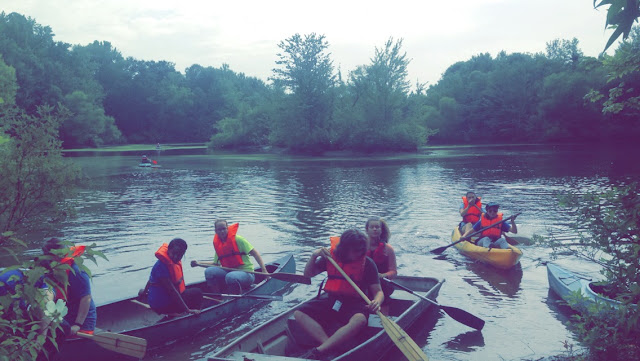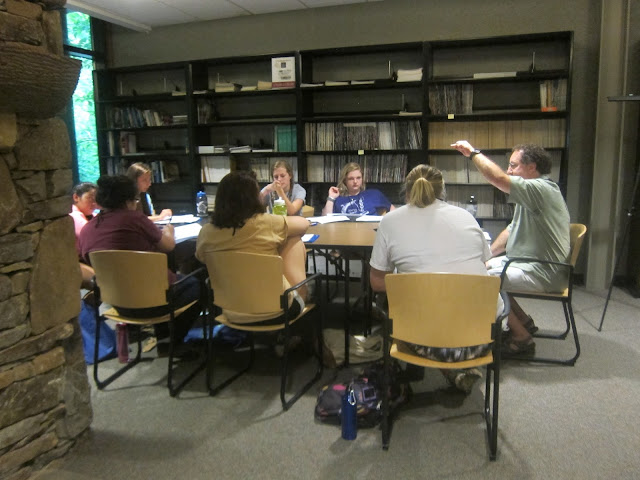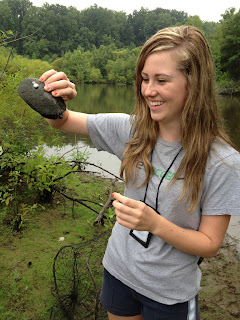Redesigning Our Future - Geocaching in the Preserve 2015
By Kayla Blackburn
During the 5th annual National Environmental Summit for High School Students at Catawba College in Salisbury, North Carolina, student campers began their Wednesday morning with an exploration of the college's 189-acre ecological preserve.
Armed with GPS navigation systems and several bottles of bug spray, the 46 campers went geocaching to learn about biomimicry, or the innovation used by humans when they model nature's behavior.
For example, students learned that phytochemicals found in the inner bark of black willow trees can often be used in medical advances. Salicyclic acid is involved in both aspirin and acne medications, with its use beginning among Native Americans hundreds of years ago.
Some types of salamanders excrete a fluid that provides defense against leeches, and they also have the ability to regenerate lost limbs. Scientists could eventually use these mechanisms found in nature to create similar systems in humans, providing assistance to amputees.
Bonus geocaching stations were placed at various points around a lake which campers had the opportunity to kayak around, involving bivalves and katniss plants and engaging campers in a highlight of camp.
This activity enlightened campers not only on the various, interesting systems found in the natural environment around them, but also on how they can apply it to their lives and those around them for design and engineering solutions.
 |
| Campers prepare to exit kayaks after geocaching on the pond in the preserve. |
During the 5th annual National Environmental Summit for High School Students at Catawba College in Salisbury, North Carolina, student campers began their Wednesday morning with an exploration of the college's 189-acre ecological preserve.
Armed with GPS navigation systems and several bottles of bug spray, the 46 campers went geocaching to learn about biomimicry, or the innovation used by humans when they model nature's behavior.
For example, students learned that phytochemicals found in the inner bark of black willow trees can often be used in medical advances. Salicyclic acid is involved in both aspirin and acne medications, with its use beginning among Native Americans hundreds of years ago.
Some types of salamanders excrete a fluid that provides defense against leeches, and they also have the ability to regenerate lost limbs. Scientists could eventually use these mechanisms found in nature to create similar systems in humans, providing assistance to amputees.
Bonus geocaching stations were placed at various points around a lake which campers had the opportunity to kayak around, involving bivalves and katniss plants and engaging campers in a highlight of camp.
This activity enlightened campers not only on the various, interesting systems found in the natural environment around them, but also on how they can apply it to their lives and those around them for design and engineering solutions.



Comments
Post a Comment